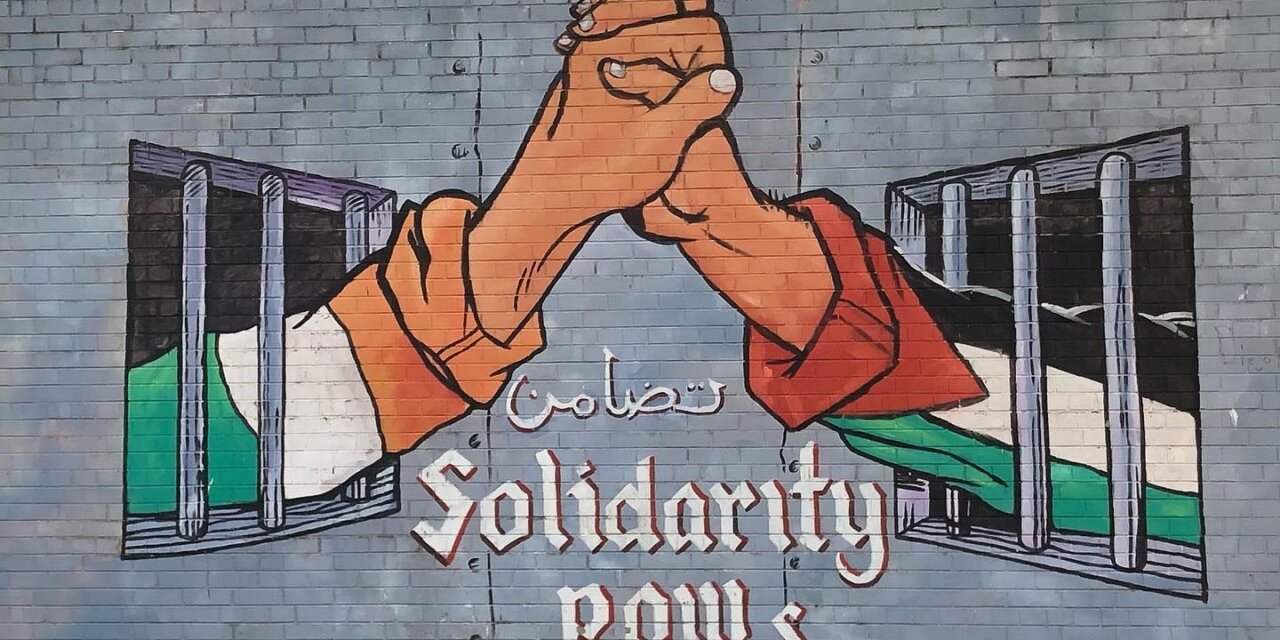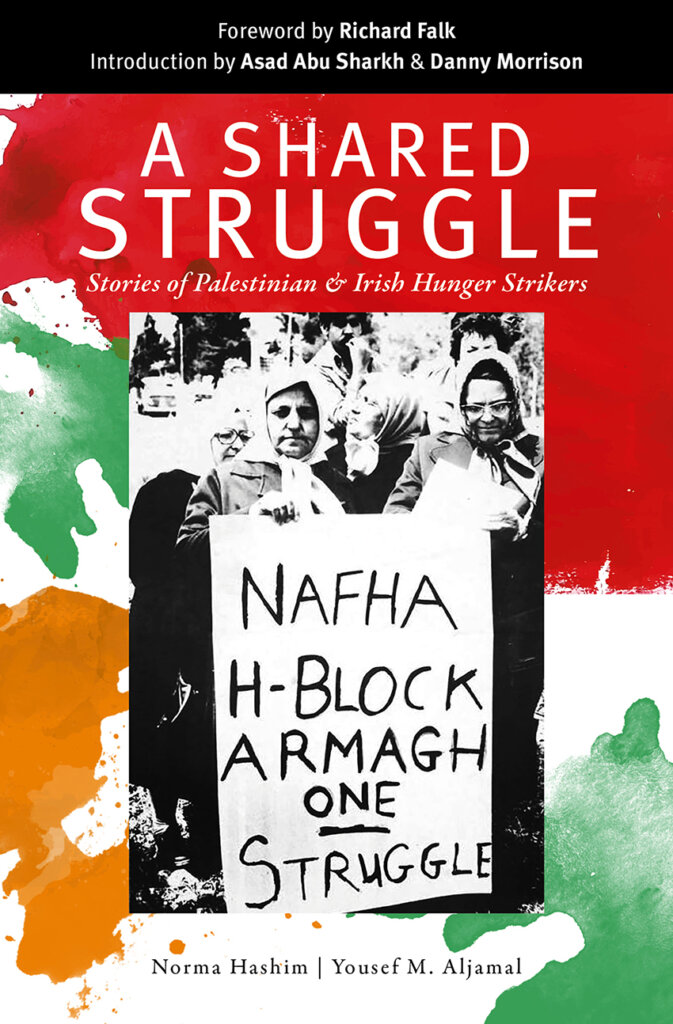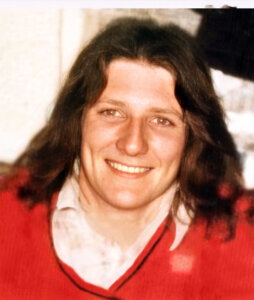The following article appears on the website of Al Jazeera and is by Yousef M Aljamal who co-authored the book A Shared Struggle: Stories of Palestinian and Irish Hunger Strikers, published by An Fhuiseog (2021).
Hunger strikes show the history of Irish-Palestinian solidarity
From boycotts to Balfour and the treatment of political prisoners, the Irish and Palestinians have had much in common.
During the 11-day Israeli assault on the Gaza Strip in May, which claimed the lives of 254 Palestinians, including 66 children, acts of solidarity were staged around the world. But, perhaps, none was as significant as that which took place in Ireland. On May 26, the Irish parliament passed a resolution condemning Israel’s “de facto annexation” of Palestine.
It was significant, but it was not surprising, for the history of Irish-Palestinian solidarity is long and mutual.
It was on display again when the best-selling and award-winning Irish author, Sally Rooney, declined an offer to translate her novel, Beautiful World, Where Are You, into Hebrew, citing support for the Boycott Divestment and Sanctions (BDS) movement.
The BDS movement, which calls for global civil society to engage in a comprehensive campaign of boycott against Israel until it allows Palestinian refugees to return to their homes, ends its military occupation of the West Bank and Gaza Strip, dismantles settlements and the separation wall and treats Palestinians with Israeli passports on an equal footing with Israeli Jews, is particularly popular in Ireland. But, again, this should come as no surprise – for the very term “to boycott” originated there.
Charles Cunningham Boycott (1832-1897) was an English land agent who worked for Lord Erne, who owned 40,000 acres (16,000 hectares) of land in Ireland. At the time, during British rule, 750 – often absentee – landlords owned half of the country. Many of them paid agents to manage their estates, as Boycott did for Erne in County Mayo. His job involved collecting rent from the tenant farmers who worked the land.
In 1880, the Land League, which had been formed the year before to work for the reform of the landlord system, which left poor tenant farmers vulnerable to excessive rents and eviction if they could not pay, demanded that Boycott reduce rents by 25 percent. Harvests had been bad and the prospect of famine loomed. But Erne – and Boycott – refused and obtained eviction notices for those tenants who could not pay.
Charles Stewart Parnell, an Irish nationalist leader and president of the Land League, urged Boycott’s neighbours to shun or ostracise him in response. Shops in the area refused to serve him and when labourers refused to work the land, he was forced to bring in workers from Ulster at a cost far greater than the value of the crops they harvested.
But Father John O’Malley, a local leader of the Land League, reportedly felt the word ostracise was too complicated for the tenants – and so the term ‘to boycott’ was born. But that word – and concept – is not the only thread connecting Irish and Palestinian history.
‘Bloody Balfour’ – from Ireland to Palestine
Not long after the 1916 Easter Rising – when, from April 24 to April 29, Irish nationalists rebelled against British rule until the British military brutally quashed the rebellion and executed its leaders – Palestinians experienced their own calamity at the hands of the British.
On November 2, 1917, the British foreign secretary, Arthur James Balfour, wrote a letter to Baron Lionel Walter Rothschild, a leading figure in Britain’s Jewish community, in which he declared: “His Majesty’s Government view with favour the establishment in Palestine of a national home for the Jewish people.”
From 1887 to 1891, Balfour had been chief secretary for Ireland, where he had immediately set about trying to repress the work of the Land League. The Perpetual Crimes Act of 1887 went after agrarian activists and aimed to prevent, among other things, boycotts.
Hundreds of people, including more than 20 MPs, were imprisoned as a result of the Act, which allowed cases to be tried by a magistrate without a jury. But when members of the Royal Irish Constabulary fired at a crowd demonstrating against the conviction of two people in Mitchelstown, County Cork, on September 9, 1887, killing three men, Balfour was given the moniker “Bloody Balfour”.
The 1980s – from Lebanon to Long Kesh
The connection between the Irish struggle against the British and that of the Palestinians against Israel continued in later years. During the 1970s and early 1980s, members of the Irish Republican Army (IRA) reportedly had ties with the Palestine Liberation Organization (PLO).
Irish members of the IRA would visit Palestinian refugee camps in Lebanon, where the PLO was based until 1982, to show solidarity with the Palestinian people. According to Danny Morrison, a former director of publicity for Sinn Fein, an Irish republican political party historically associated with the IRA: “The IRA has never confirmed a working relationship with the Palestinian Resistance. There were reports of republicans being trained at a Palestinian camp. There was an arms seizure by the Irish authorities in Dublin Port which came via Cyprus and was allegedly from the PLO to the IRA in 1977 but the IRA never confirmed this.”
But, perhaps, the issue that most closely connects the Irish and Palestinian experience is that of political prisoners.
In 1936, during the British Mandate in Palestine, Britain introduced Administrative Detention, which allowed for prisoners to be interned for an indefinite period without trial or charge. Israel still uses this law to this day, and hundreds of Palestinians are currently imprisoned under it.
In the north of Ireland, an equivalent law was introduced in 1971, three years after the start of the Troubles, with the intention of penalising the IRA. Internment without trial involved mass arrests, mostly of nationalists and Catholics, many of whom had no connection to the IRA. Those arrested were sent to Long Kesh Prison Camp (which later housed the notorious H-Blocks or Maze Prison). By the time the law ended in 1975, almost 2,000 people had been interned.
Those held at Long Kesh argued that they were political prisoners rather than common criminals and should be treated as such. In 1972, prisoners serving sentences related to the Troubles were granted Special Category Status, or political status, meaning that they did not have to wear prison uniforms or do prison work and could receive extra visits and food parcels.
But, in 1976, Special Category Status was ended. (A century earlier, Arthur Balfour had advocated treating political prisoners in Ireland like common criminals.) Israel, likewise, refuses to recognise the political status of Palestinian political prisoners, even though many of them – like Ahmad Sadat and Marwan Barghouti – are leaders of political groups.
The hunger strikers
On March 1, 1981, five years after the Special Category Status was ended, an Irish republican prisoner, Bobby Sands, began a hunger strike to demand the restoration of political status. Other republican prisoners joined him in the hunger strike at staggered intervals. Ten of them, including Sands, died.
After Sands’s death on May 5, the 66th day of his strike, Palestinian prisoners in Israel’s Nafha prison smuggled out a letter in support of the Irish hunger strikers. It read: “We salute the heroic struggle of Bobby Sands and his comrades, for they have sacrificed the most valuable possession of any human being. They gave their lives for freedom.”
There had been several hunger strikes by Palestinian prisoners before this and many more since. Five Palestinians have passed away while on hunger strike and dozens have come close to death. Thousands of Palestinian prisoners have participated in what Palestinians call “the battle of empty stomachs”, either alone or en mass, over the years.
Hunger strikes are effective because, as well as humanising the prisoners as people willing to sacrifice their lives for freedom, they gain international attention – helping to build international solidarity, particularly among people in the diaspora.
I recently contributed to a book – A Shared Struggle: Stories of Irish and Palestinian Hunger Strikers – in which the stories of some of these Palestinian hunger strikers, and their Irish counterparts, are told.
One of those stories is that of Rawda Habib, who was arrested by the Israeli army in 2007 and sentenced to eight years in prison. When Israel refused her request to be moved to the women’s section of the prison, Habib, who was pregnant at the time and later gave birth while imprisoned, went without food or water for three days.
“I didn’t know that usually a hunger striker stops eating food and only takes salt with water, so as their stomachs don’t rot,” she explained in the book. “I also discovered that a striker could just tolerate hunger but not thirst. Not taking water can lead to paralysis, renal failure or even death within a few days. On the evening of the third day, I collapsed and fell to the ground.”
She was moved to the female section of the prison and was later released as part of a prisoner swap between Hamas and Israel in 2011.
Habib’s story is similar to that of Hana Shalabi. In 2012, Shalabi, who is from the West Bank city of Jenin, went on a hunger strike for 43 days, ending it when Israel agreed to deport her to the Gaza Strip, where she still lives today. Shalabi told me that while she was on hunger strike, she was transferred to a hospital in Haifa, the city where her parents had lived before they became refugees during the Nakba. But when the Israeli authorities realised she was happy to be in her hometown, she said they transferred her to a different hospital as a form of punishment.
Laurence McKeown, an Irish Republican who was jailed for 16 years from 1976 to 1992 took part in the 1981 hunger strike, joining after Sands and three others had died. His strike ended on its 70th day when his family authorised medical intervention to save his life. In the book, he described how prison guards would bring him food three times a day in an attempt to convince him to abandon his hunger strike. Today, Israel adopts a similar method against hunger-striking Palestinian prisoners; in April 2017, when 1,500 Palestinian prisoners went on hunger strike, Israeli settlers organised BBQ parties close to the cells where hunger strikers were held.
The similarity between the inhumane practices suffered by Irish political prisoners in the past and the inhumane treatment of Palestinian prisoners today serves as a reminder of this long history of solidarity between two countries plagued by settler-colonialism. On the cover of A Shared Struggle is a photograph of Palestinian women carrying signs that read Nafha, H-Block, Armagh, One Struggle; it is an image that speaks volumes about Irish-Palestinian solidarity.
As of November 29, the International Day of Solidarity with the Palestinian People, two Palestinian prisoners are on hunger strike: Hisham Abu Hawwash, who has been on hunger strike for 108 days, and Nidal Ballout, who has been on hunger strike for 35 days. Both are held under Administrative Detention without charge or trial.
But as Bobby Sands wrote all those years ago in The Lark and the Freedom Fighter – an essay that reminds us of the late Palestinian prisoner Muhammad Hassan, who kept a bird in his cell at Nafha prison, feeding it and granting it freedom every day, until an inmate accidentally stepped on the bird and killed it: “I have the spirit of freedom that cannot be quenched by even the most horrendous treatment. Of course, I can be murdered, but while I remain alive, I remain what I am, a political prisoner of war, and no one can change that.”
The views expressed in this article are the author’s own and do not necessarily reflect Al Jazeera’s editorial stance.
Yousef M Aljamal is a researcher in Middle Eastern Studies and the author and translator of a number of books. He is a co-author of A Shared Struggle: Stories of Palestinian and Irish Hunger Strikers published by An Fhuiseog (July 2021).





